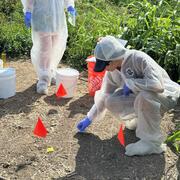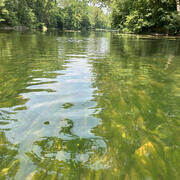Where we WERC
Our scientists conduct studies from the deserts of the Mojave to the diverse ecosystems of the Great Basin
Our Scientists at WERC
Ecologists collecting field samples to detect contaminants in the environment
Western Ecological Research Center (WERC)
The Western Ecological Research Center (WERC) is a USGS Ecosystems Mission Area operation serving primarily California and Nevada. WERC scientists work closely with Federal, State, academic, and other collaborators to address a diverse array of high-profile topics. Topics include research on effects of wildfire, sea level rise, drought, energy development and more on federal Trust species.
WERC Quick Links
Check out our most up-to-date data, events and science.




